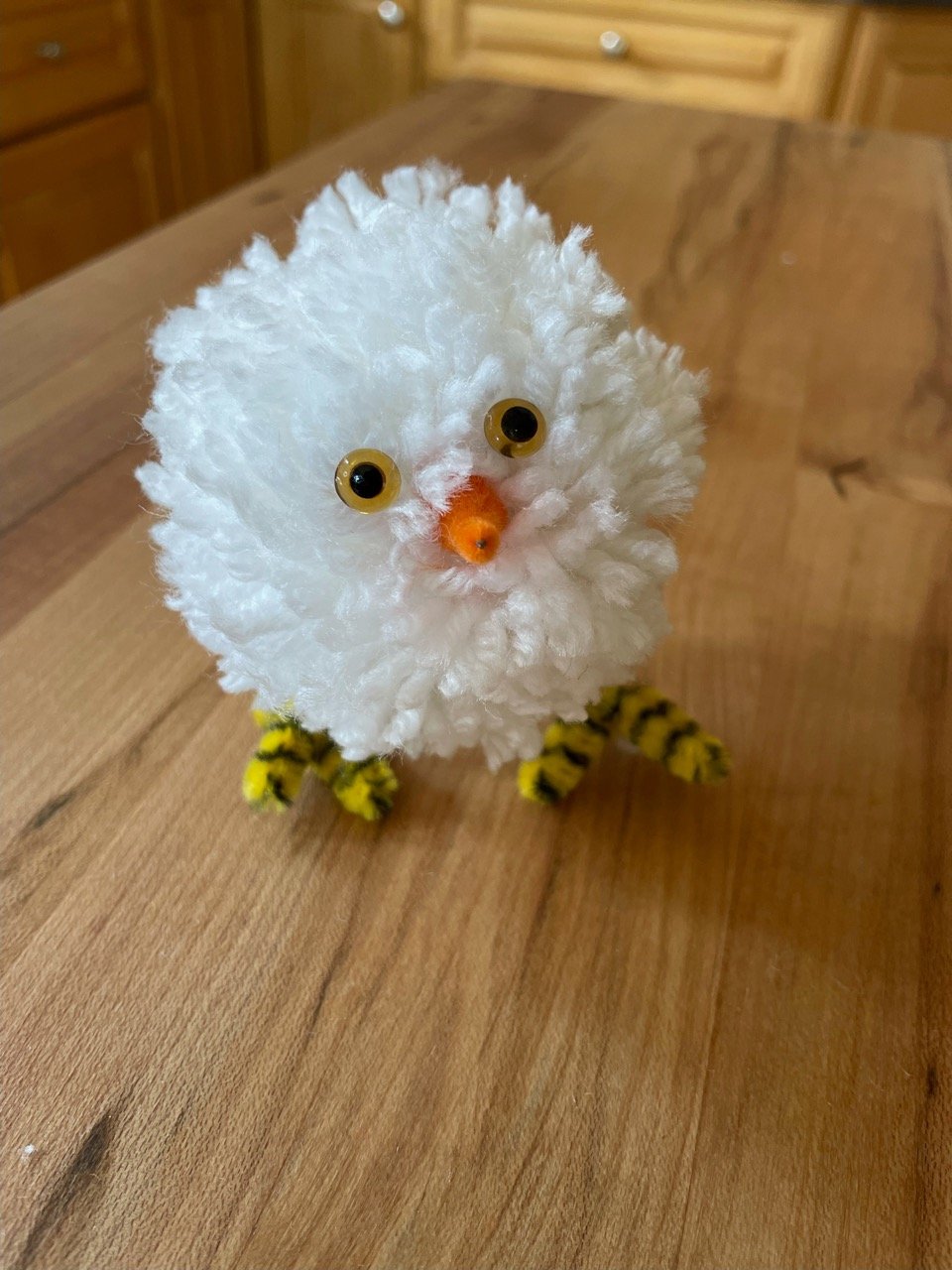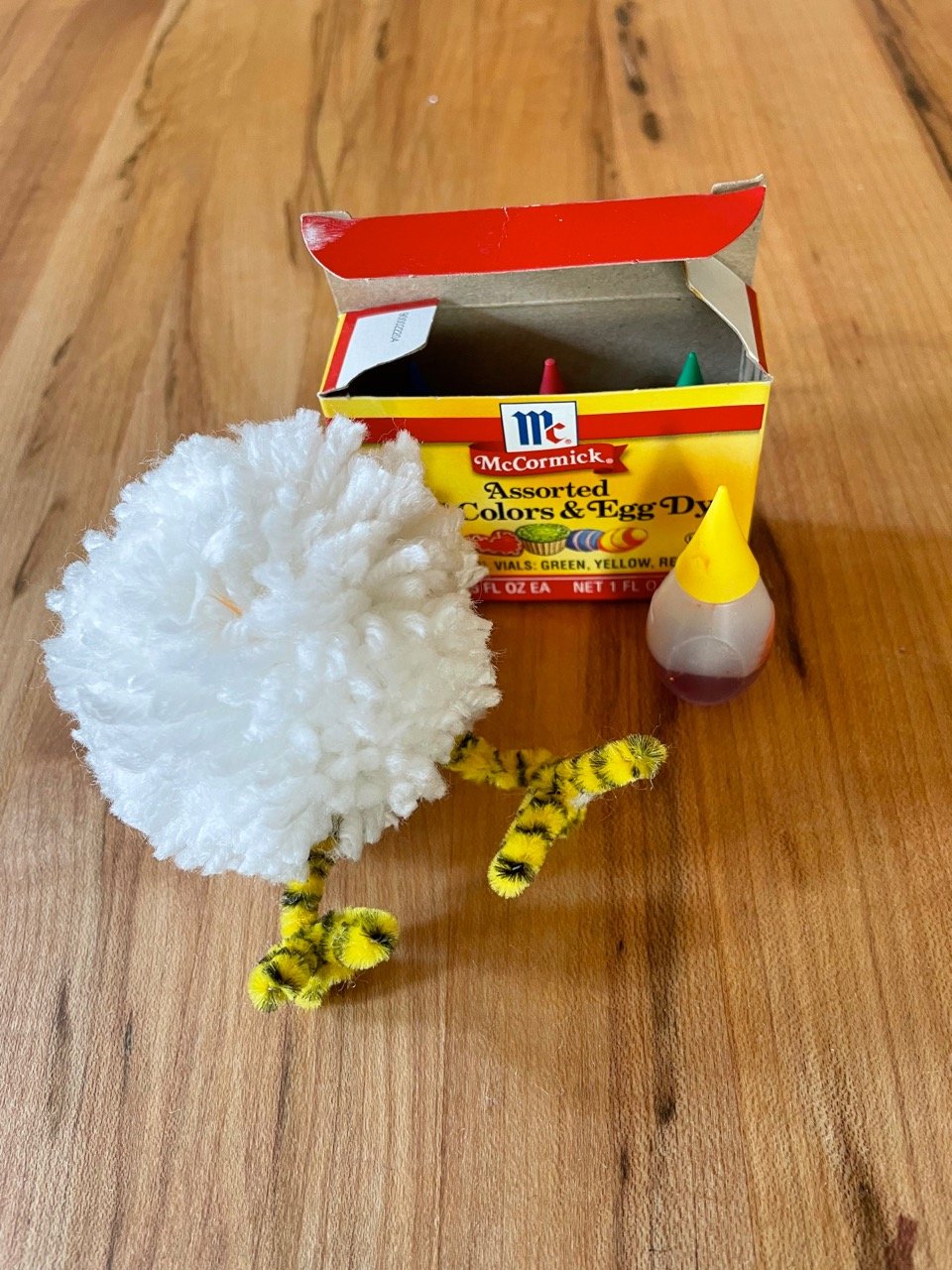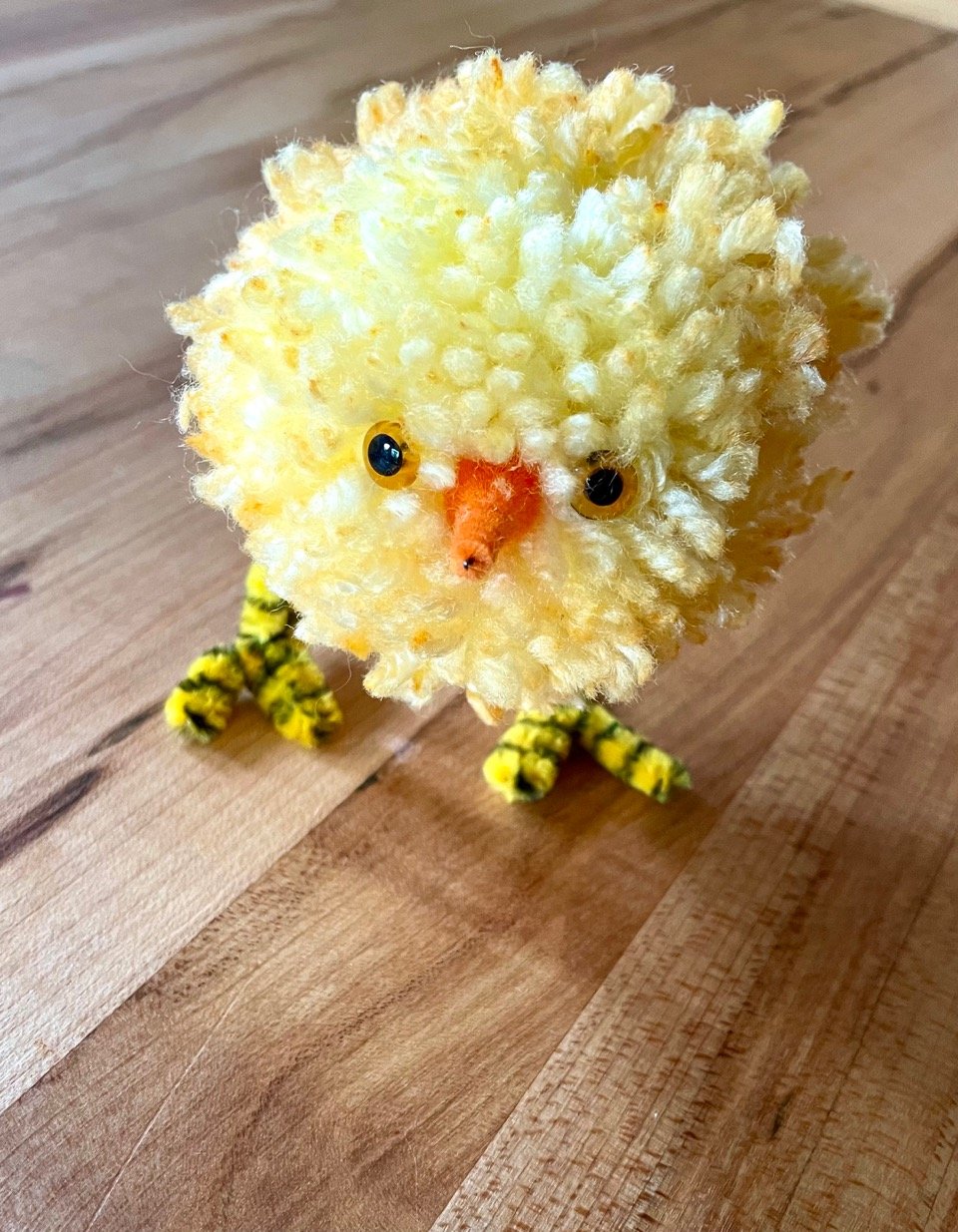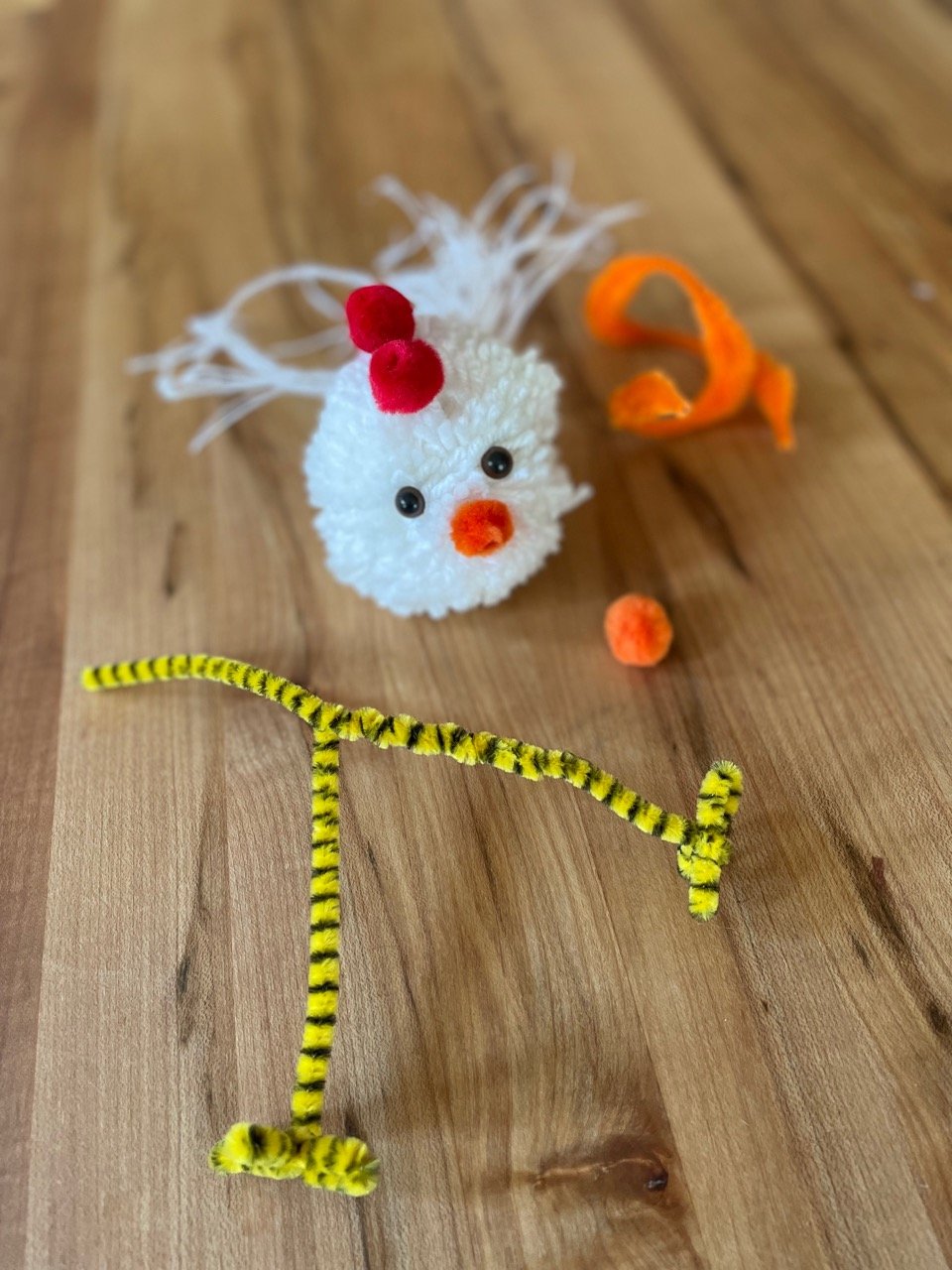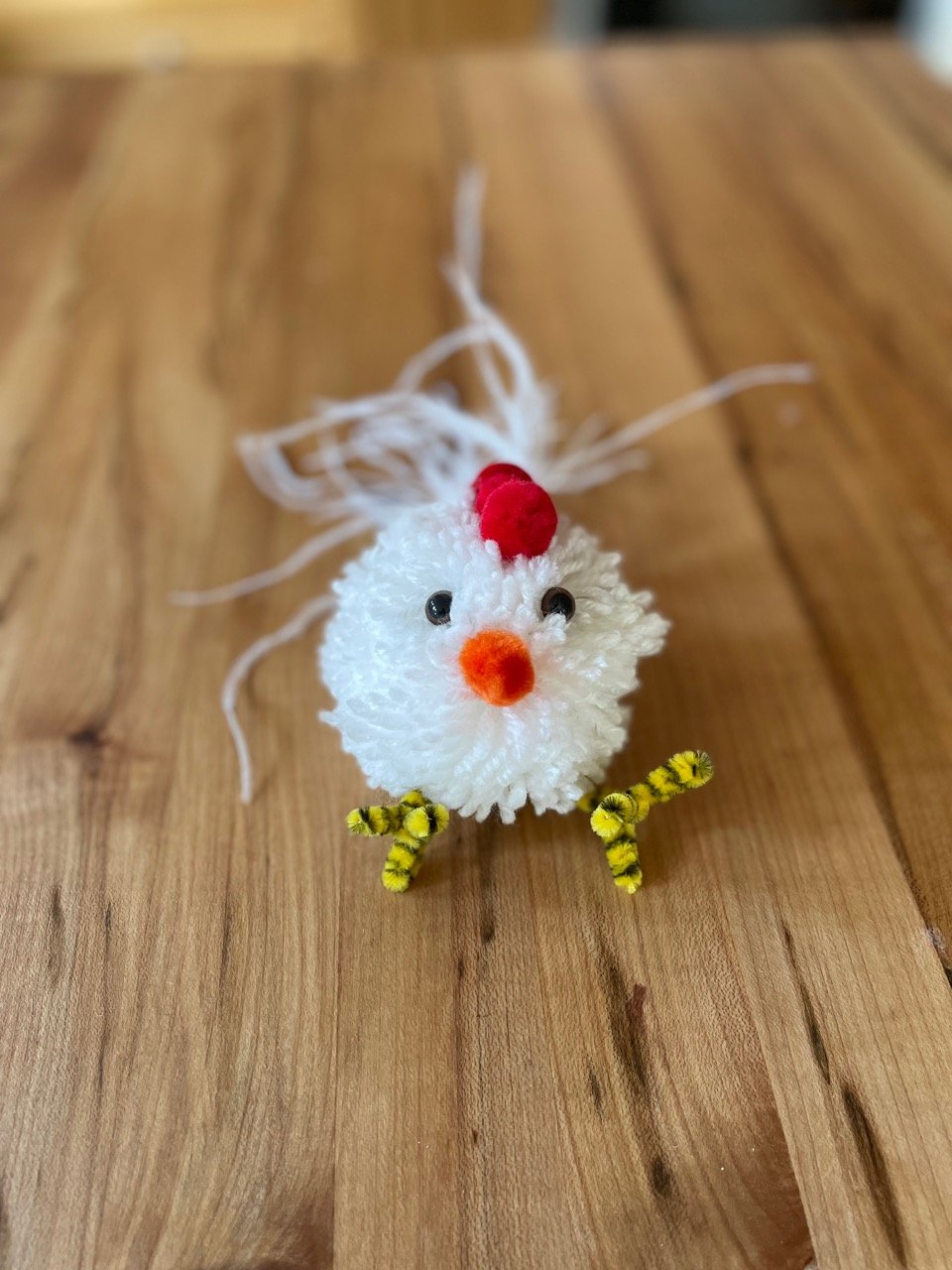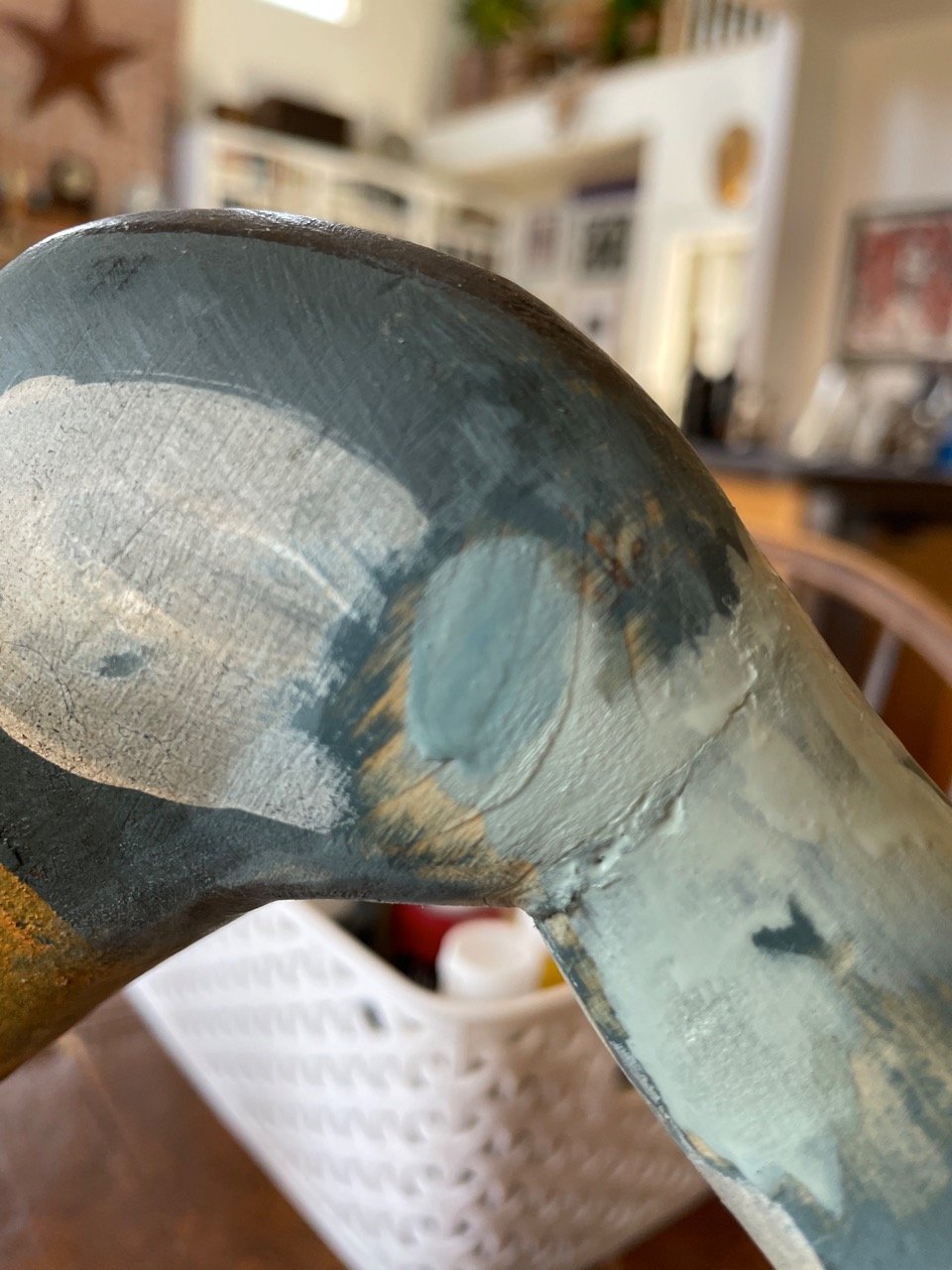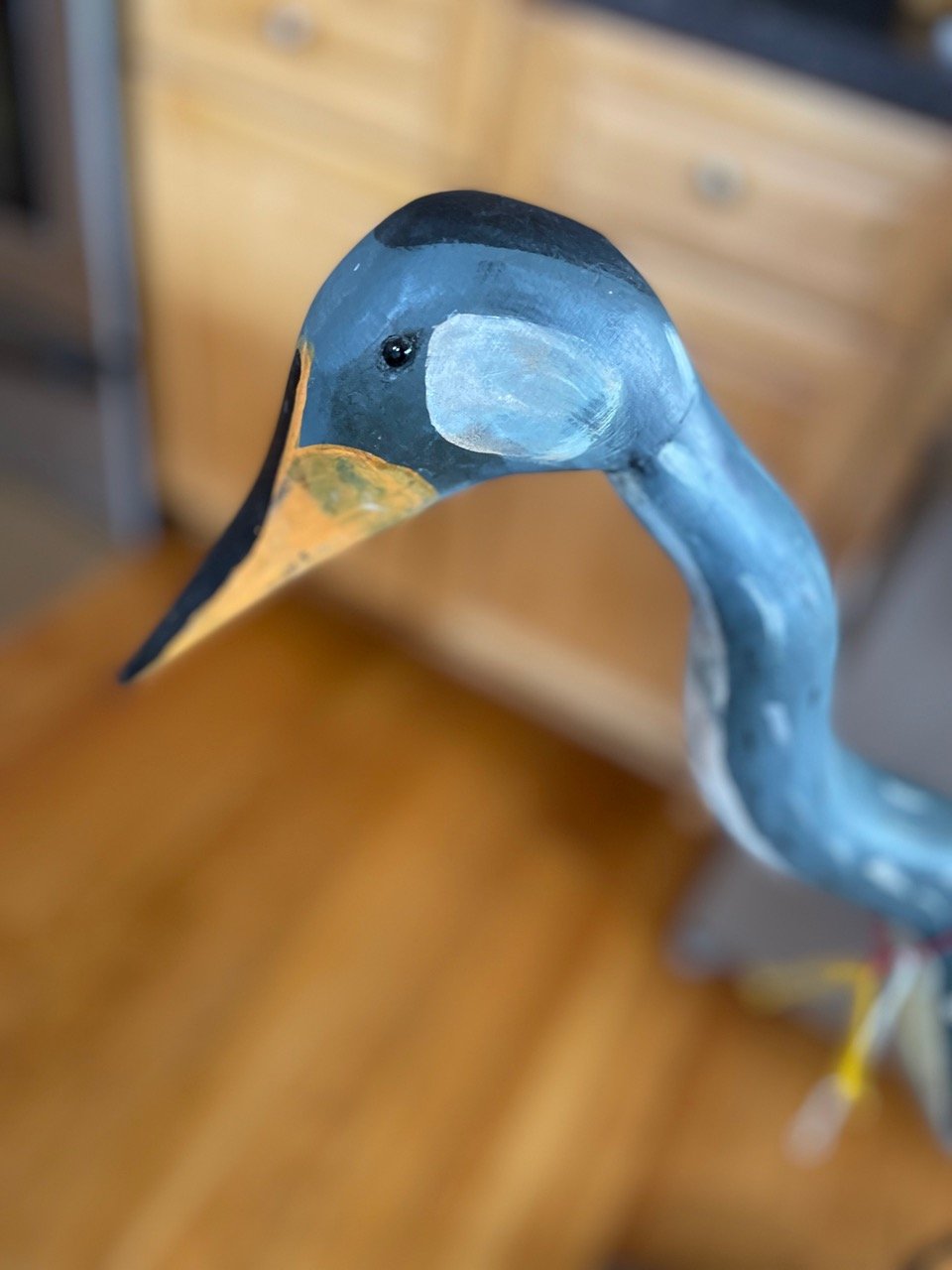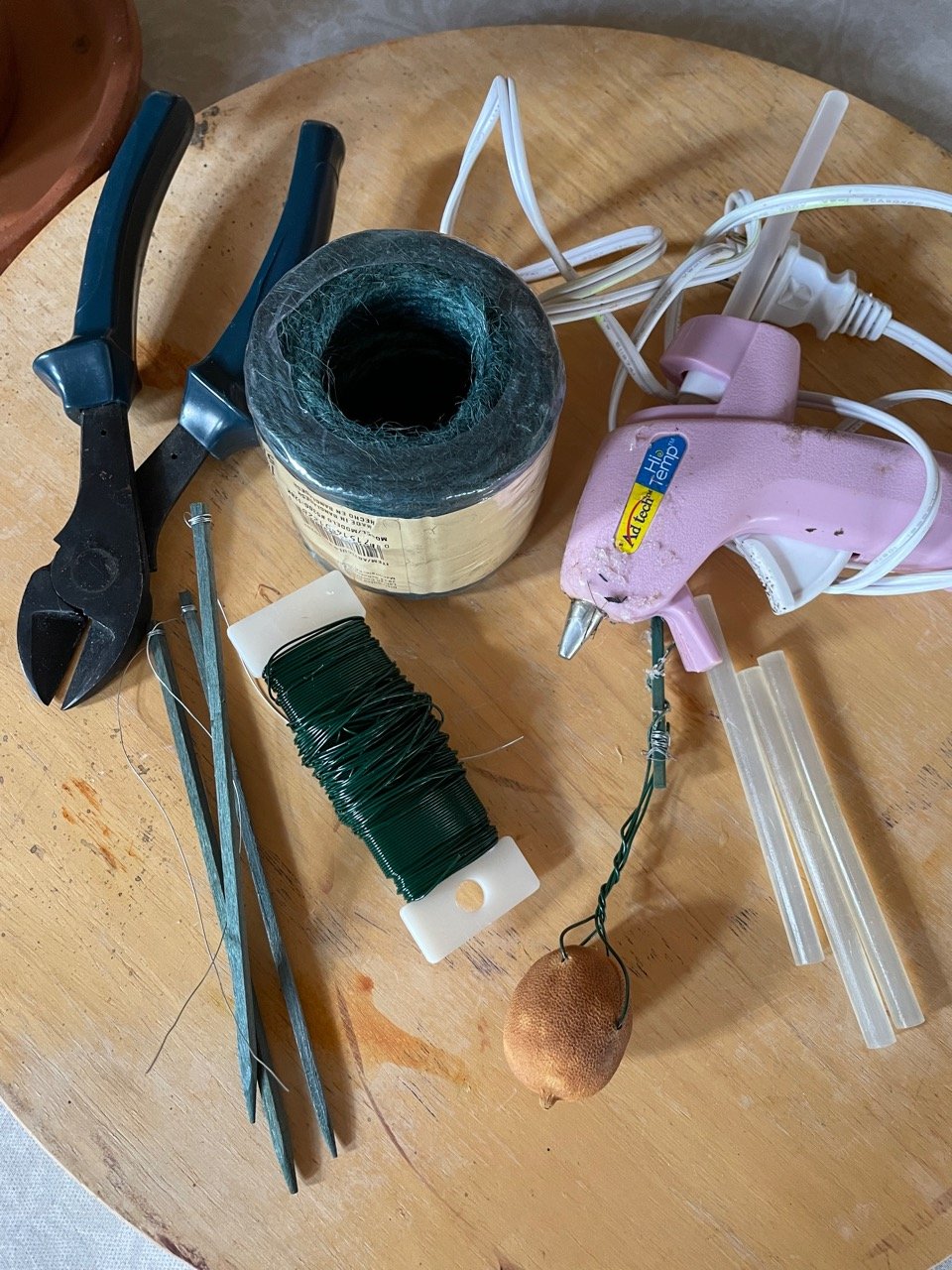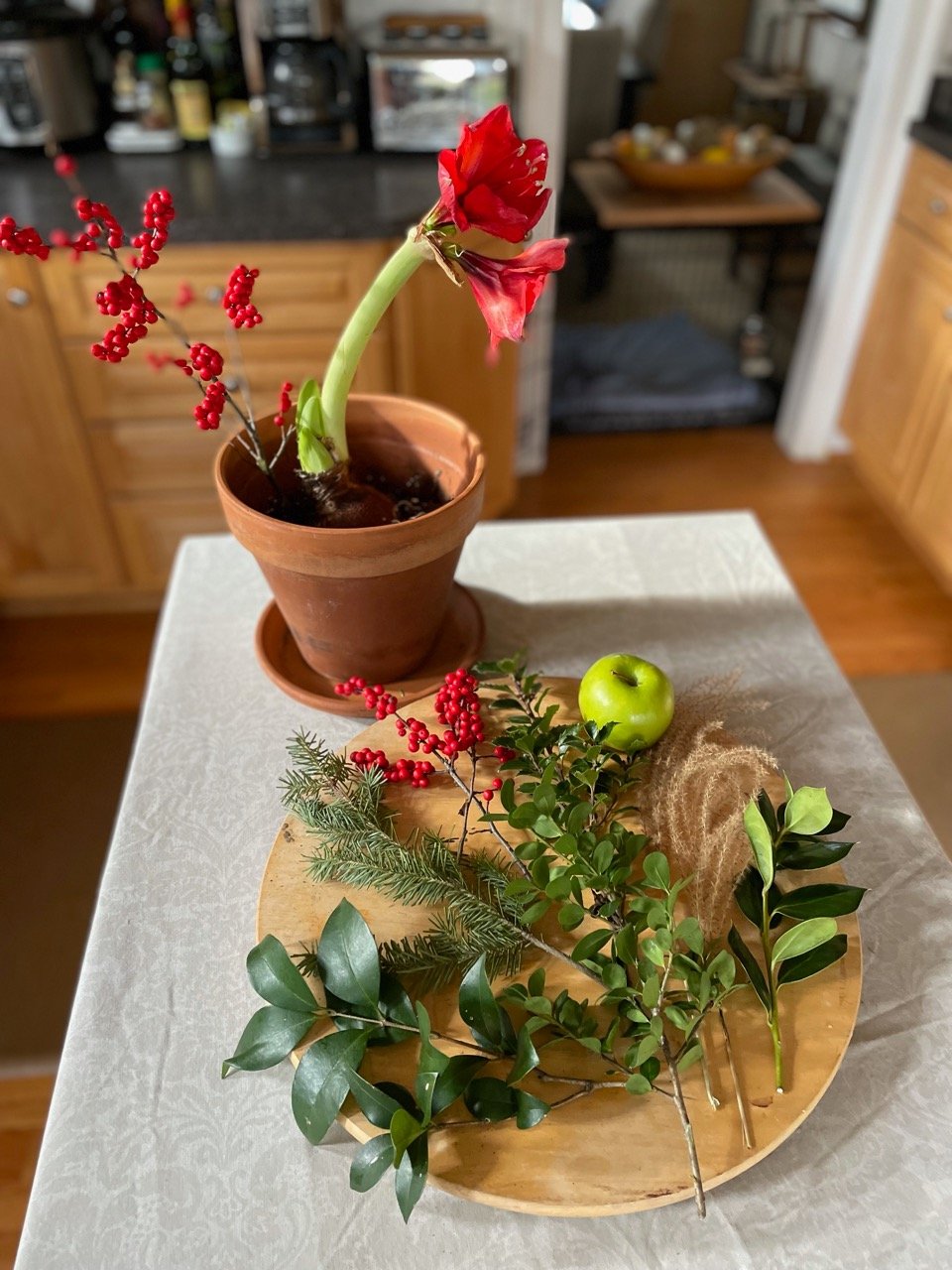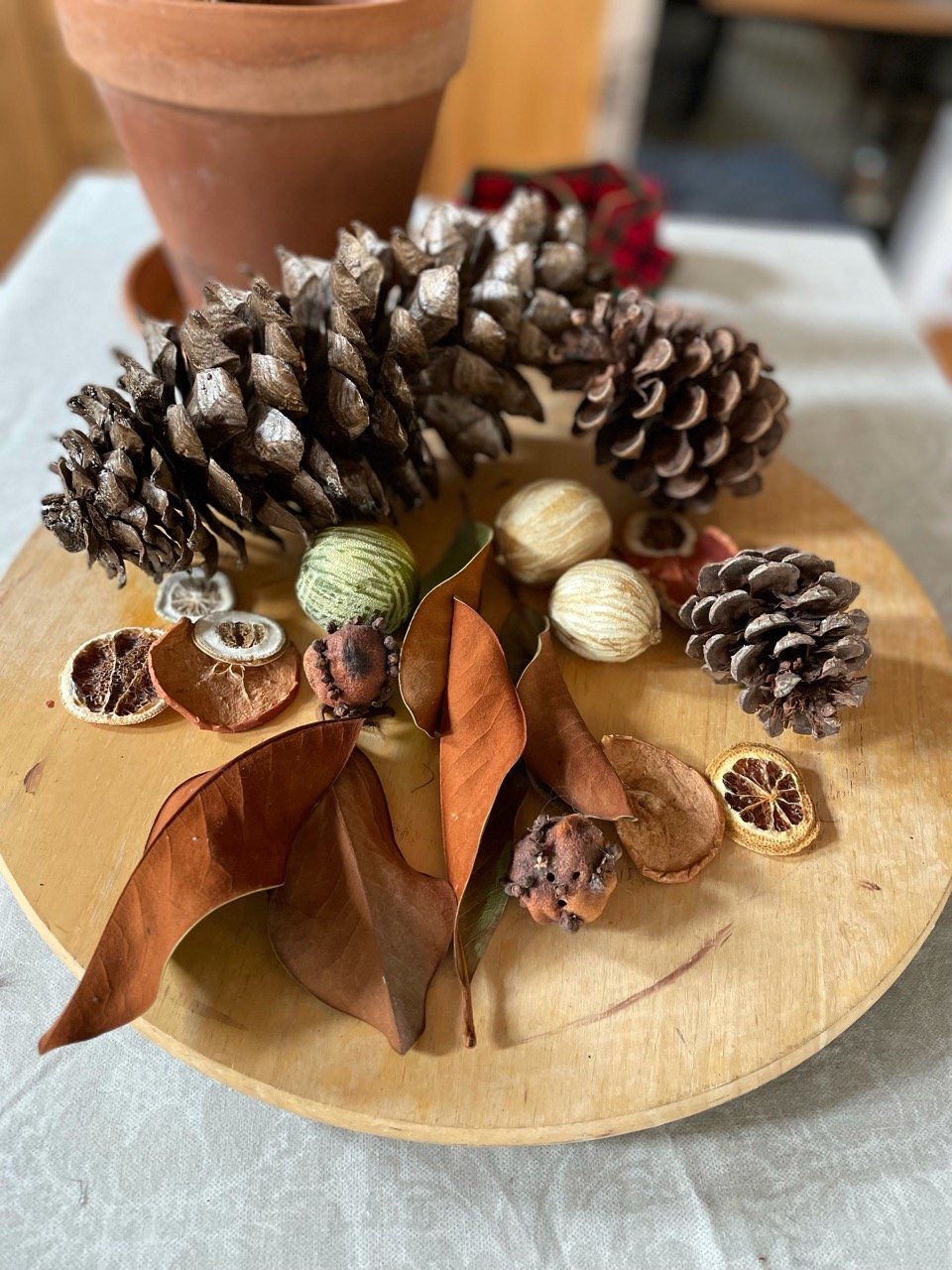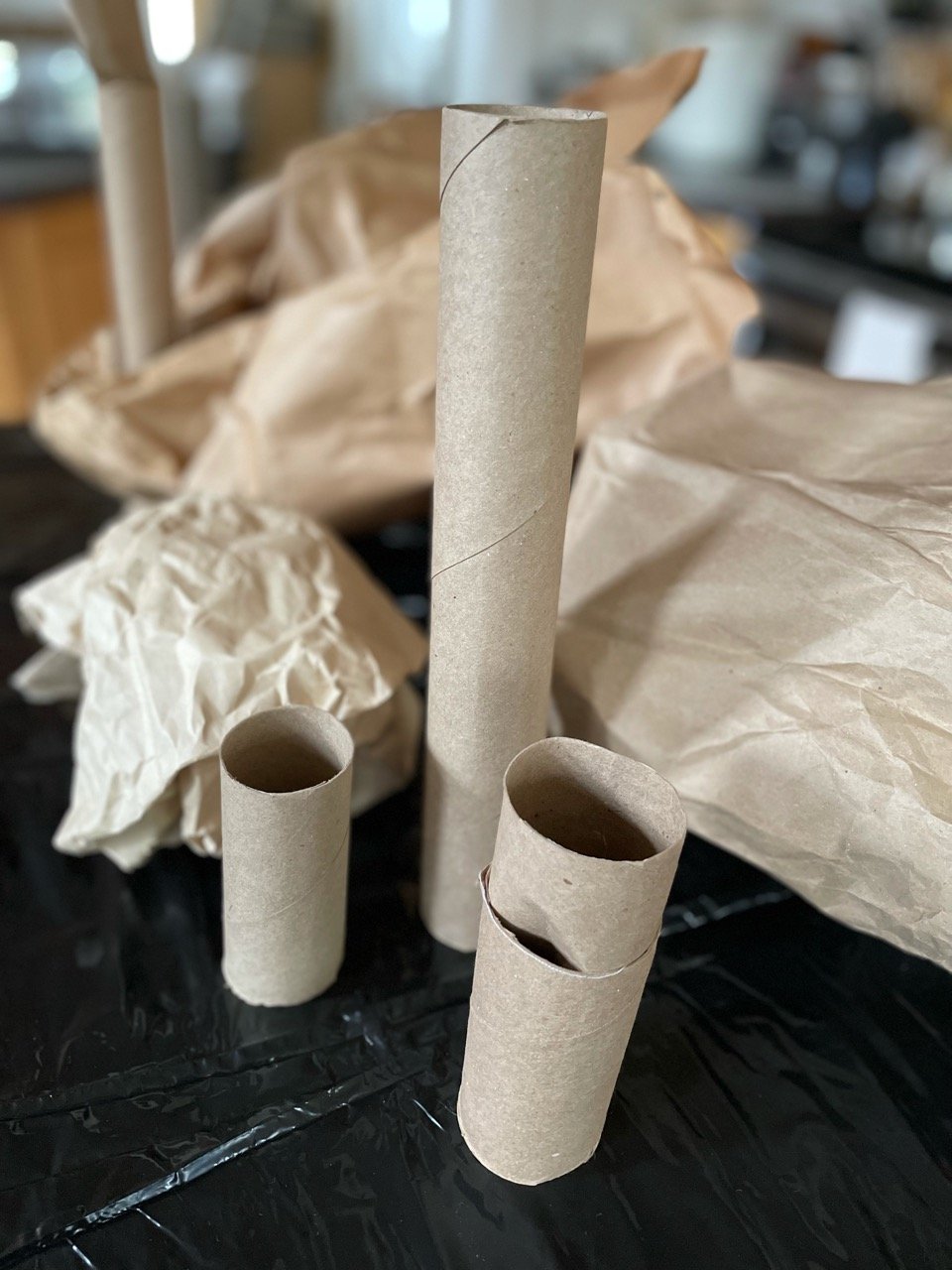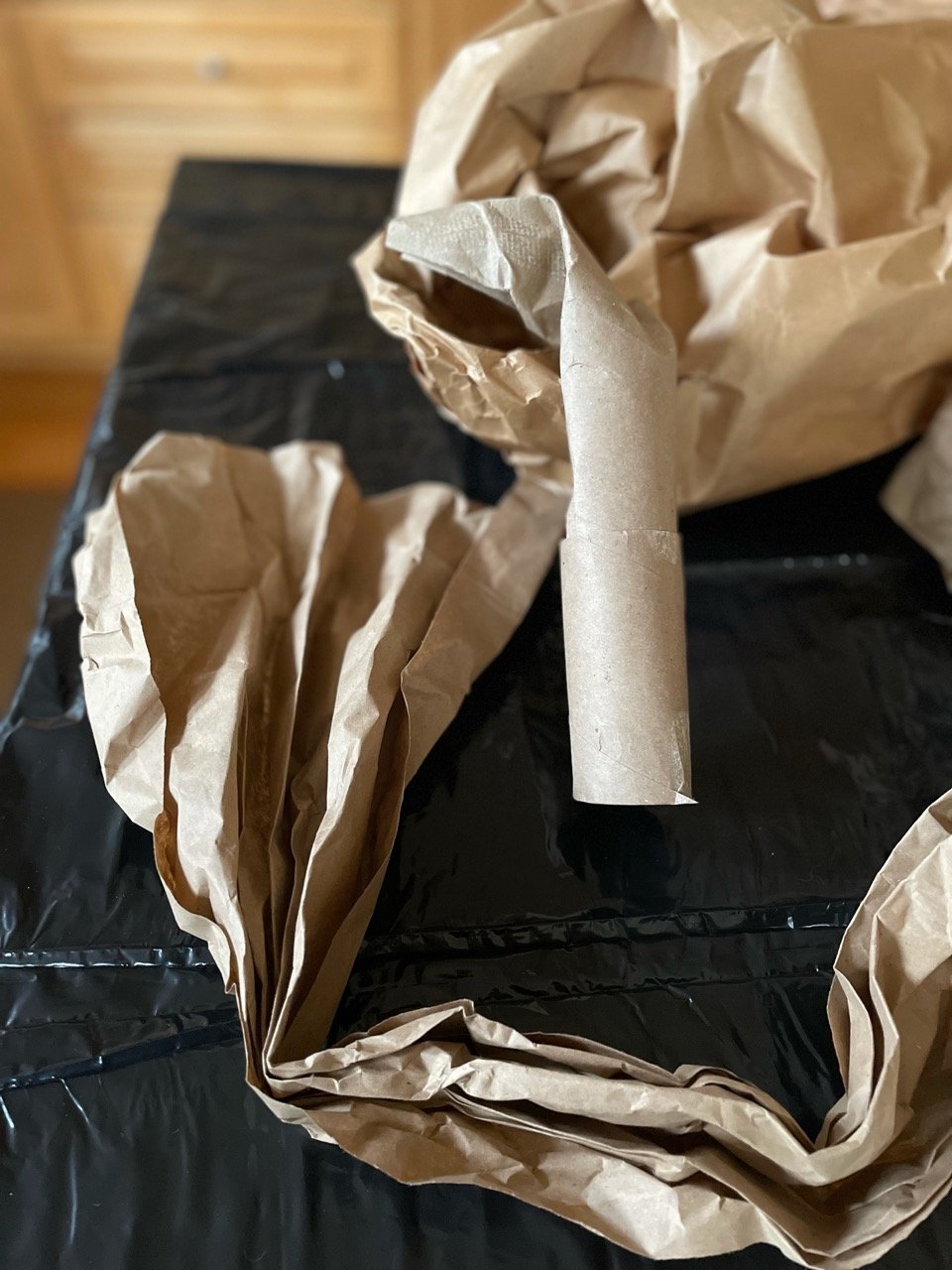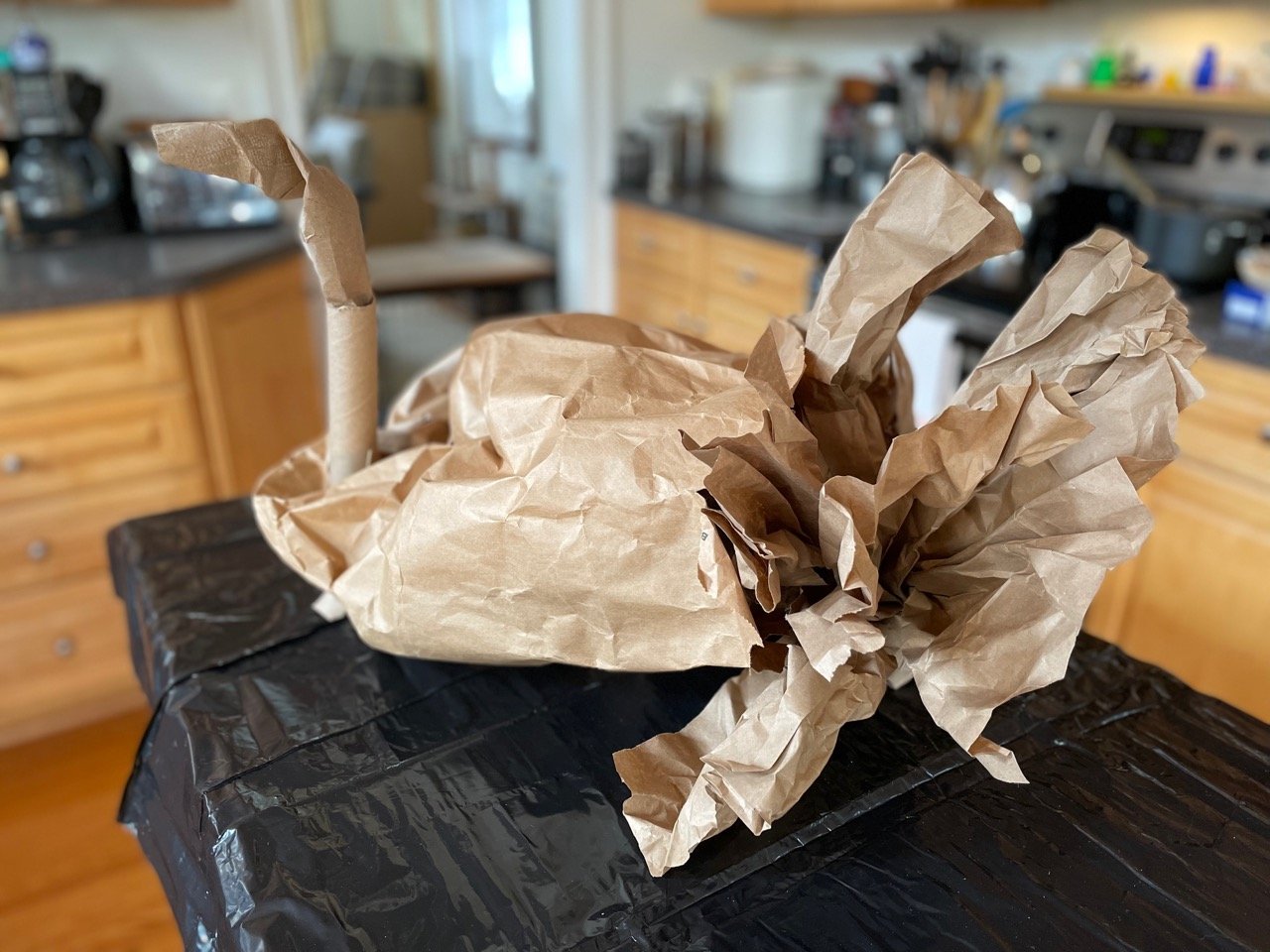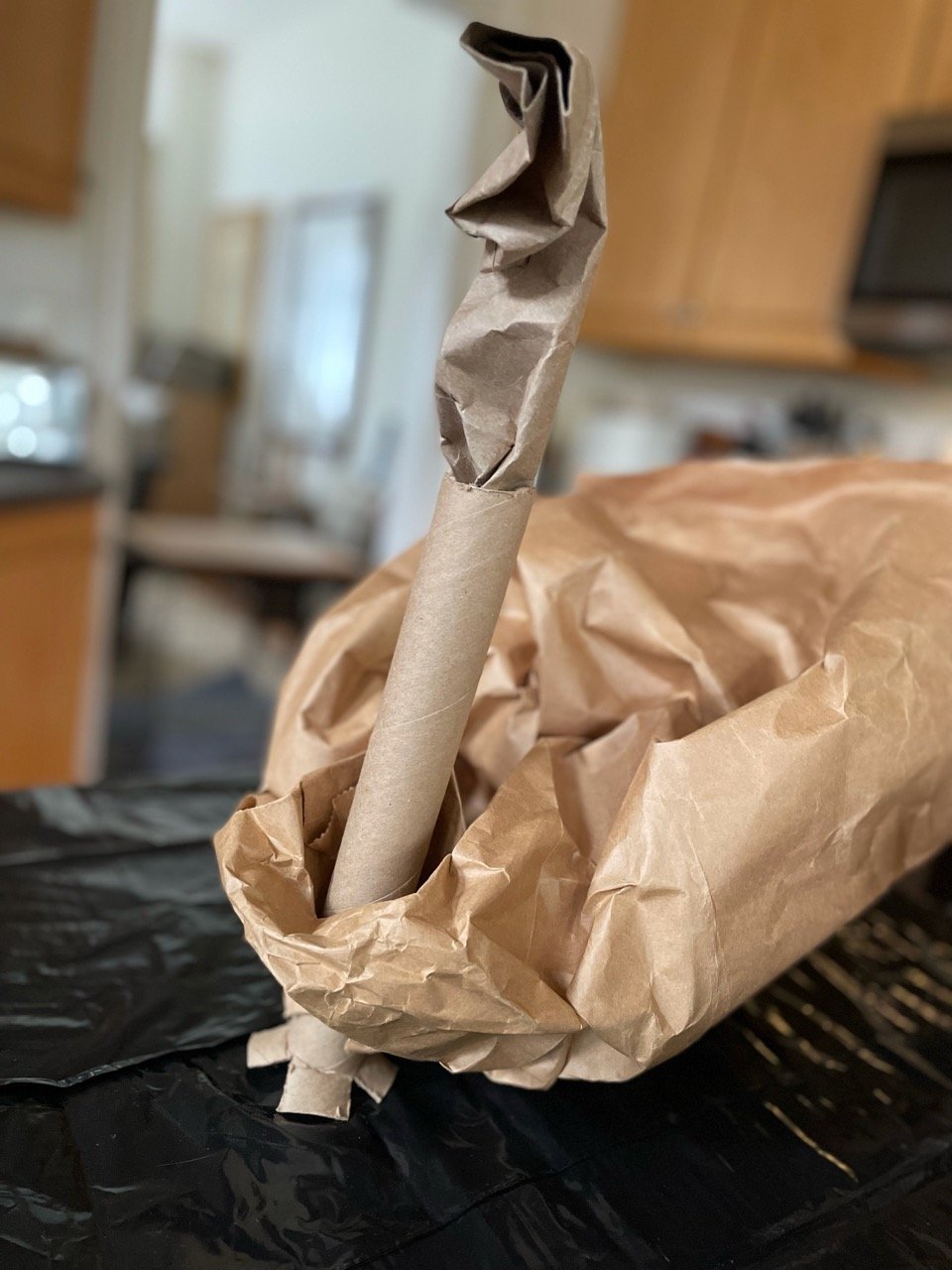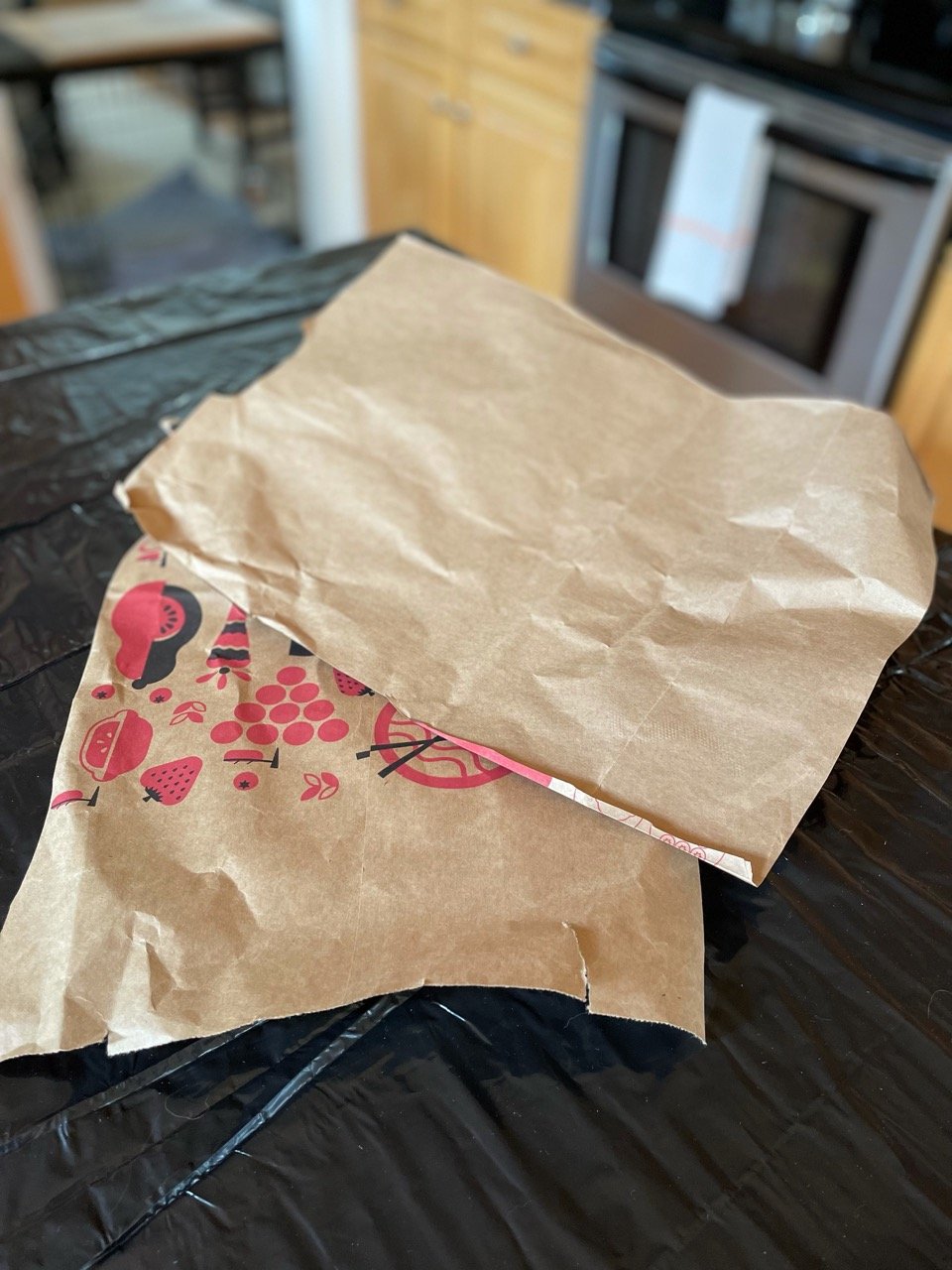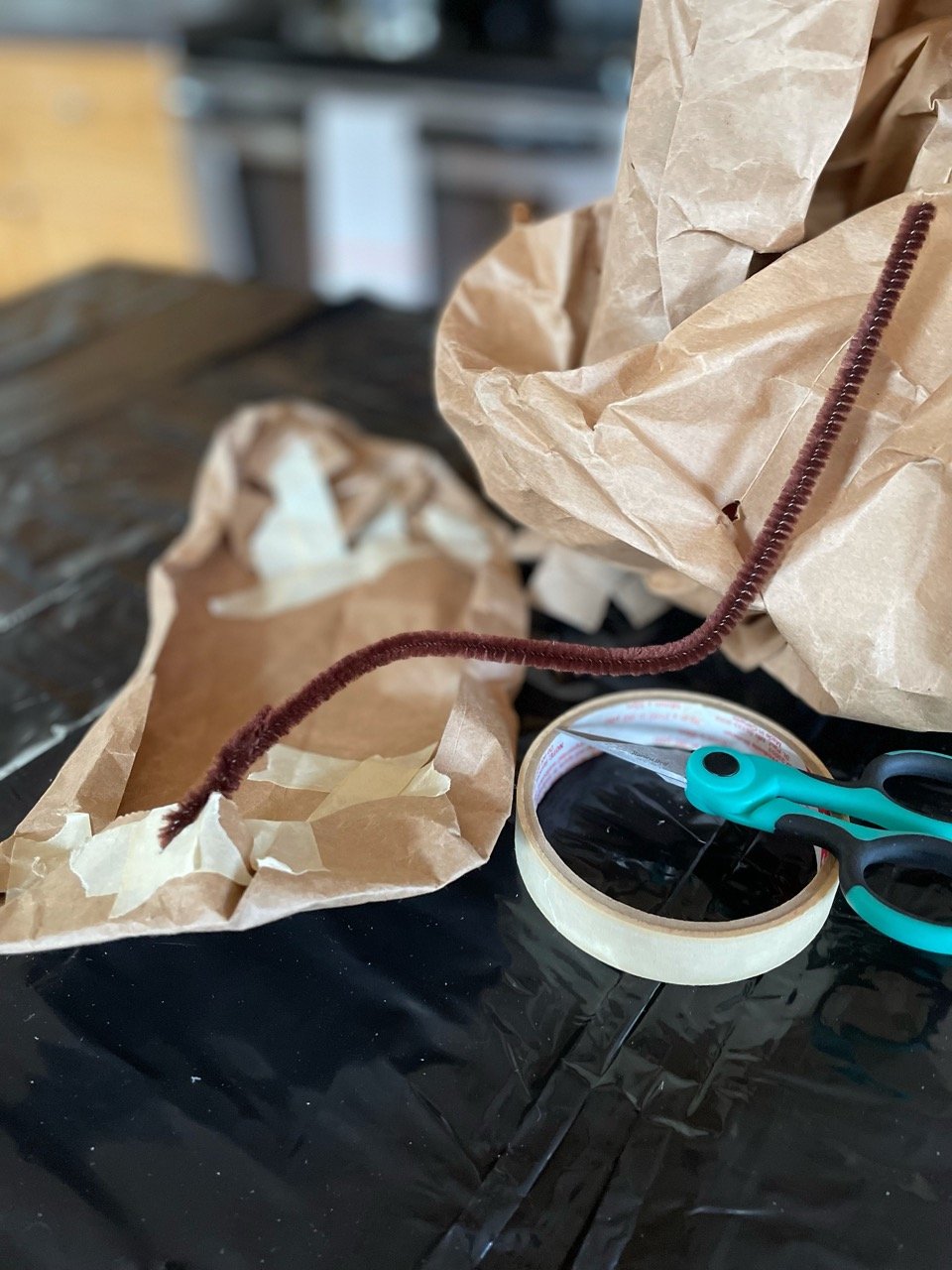hold fast to what matters
The rings were all converging this past weekend, were they not? Those who follow the Abrahamic religions were observing and/or celebrating Easter, Passover and Ramadan— plus it was a full moon, the pink moon, as it happens… or the "pink, lavender, pale blue, and other pastel springtime holiday” moon AKA "Reese’s peanut butter eggs for breakfast” moon…
The world, no less tenuous, no more peaceful, did seem a little cheerier as widely available Covid tests meant many people got together to celebrate.
We did.
And we absolutely forgot how to function at a Sunday dinner in the (gasp) DINING ROOM.
Boxes, storage bins, and unoccupied cobwebs were safely cleared to reveal a vault of a room. In the center, a flat surface surrounded by chairs clearly intended for convening and comestibles. We entered this unremembered temple to sharing a meal as cautiously and with the breathless exultation of Howard Carter and his Egyptian team headed into Tutankhamen’s tomb for the first time, but with (all toes and fingers crossed) fewer viral results.
Could not find the linen napkins, couldn’t be bothered with the china— but with a bit of last minute clipping from outside and a recycled Easter basket, there WAS a centerpiece. Needn’t be much. You can do it, too. The important thing was to have those laughs and love those faces that could make it.
Plus also, sent some cards, some chicks, some chocolate, and bunny beans to those who we gathered close in our hearts if not our arms.
Recycled wool chicks, carefully created blown out Araucana eggs— and the beautiful work of Ukrainian artists.
Centerpiece of repurposed ribbon, sprigs of viburnum, and real eggs in the (gasp) DINING ROOM, surrounded by viburnum branches in a bourbon bottle and sheep headed for the yarn shop.
Eggs have always represented new potential, new beginnings. We wish you better days, safety, and the surety of peace and plenty.
we are not just a one chick pony
We’ve been working around the cluck… ahem… to get some tutorials up for easy peasy spring decor. If you thought the pom poms could only be used one way? Yolks on you— Chick this out: same pom, different chicken.
We used the same techniques as our spring chicken post. A store-bought or homemade yarn pom pom, eyes, a beak, then encircled with wire or chenille stems for legs and feet, embedded down in the fiber approximately halfway on the sphere, and made secure fairly tightly. A new twist on chicken legs!
Defying eggspectations, we changed it up and dyed the yarn chickie-yellow, using easy-to-hand food coloring. Hint: leave off gluing on eyes and beak until after the dyeing and drying process is complete.
So we got up to our old chicks, covered our work surface, protected our clothes, and put on some plastic gloves in preparation for operation Tres Chic II…Hensome Lad: Son of a Biscuit.
We mixed yellow food coloring and water in a small bowl.
In a poultry amount of time, the yarn became saturated with dye by turning the pom a couple times. We rinsed the dyed pom in cool water, wrung it out carefully, then put it in the dryer with a couple old towels (the dye will come off until it is fully dry and set).
Trimming out some of the fiber to add some shaping, gives our chick some definition.
Talk is cheep… pictures say it best: this little one is im-peck-able!
Don’t mind us. Everyone around here is a comedi-hen. The best chicken puns don’t fall far from the poul-tree and we have all been dealing with not one, but several, eggs-istential crises, so we had to get them all in. Can’t wing for losing…
We’ll show ourselves to the eggs-it…
this IS a spring chicken
Adding handmade Spring decorations to your home or someone’s basket is easy and fun! Use homemade or purchased yarn pom poms as a start for this simple Spring Chicken.
Small pom poms, which can be made or store-bought, chenille stems or simple wire, any type of eyes— combine to make this adorable little Easter tree ornament or basket stuffer.
We twisted the stems to form simple feet, trimmed a purchased pom into a beak shape —but an end of orange chenille stem would work as well. We added simple animal eyes, trying everything in place before gluing with water-based glue (school glue or tacky glue will work and are not as messy as hot glue).
The stem or wire legs and feet are wrapped around and into the pom pom tightly so that the fiber covers it all around. We added a bit of ostrich feather for a floofy tail.
Tres chic!
upcycled easter
We are still loving the idea of using what you have on hand, re-using what can be given a second purpose, and cutting back as far as possible on cheap, imported, high carbon-cost decor. Bein’ that it is Spring and we turn to all things renewing, we are going entirely renewable. Take an old wool coat and rehabilitate it as your bunny!
This fellow is stuffed with chopped up, mismatched socks. The carrots are spindles, twine, and last year’s Easter grass combined.
Simple stamped cards to send your happiest thoughts. Stamp and embellish with markers, stickers, or paint.
Wool coat bunny showing the simple, sturdy construction.
We thought he looked a bit downcast, so we brightened him up with needle felted wool accents.
A leftover yarn “ribbon,” and Rabbit is ready!
heron repair— kinda kintsugi
Getting out a bit by wearing a really good, well-fitting mask. Finding a way back to being in business at some point. Hit the local antique mall, one of the few locals left standing after pandemic shutdowns. We came across a neat piece in need of a bit of TLC and invited him home for tea and kintsugi.
At some point this carved and painted folk art heron had a run in with a Tudor dynastic failure or Alice’s Red Queen. The head was re-attached with love, but not skill… and with Super Glue. For the love of all that is Good in the World— DO NOT USE SUPER GLUE. It is overrated, brittle and impossible to remove from a lot of surfaces— hello E/R trip for fingertips or eyelashes…Cyanoacrylate is only super at being the basis for fuming for fingerprints in an sealed aquarium. If you know, you know and you are our peeps— and if you have done more than watched/read/podcasted True Crime and tried this at home? Welcome, tribe.
This really nifty carved bird needed careful surgery and re-gluing. We broke that g-darned brittle seal and picked out the plastic super glue, applied cellulose-based glue which melds with the fibers of the carving, expanding into a nice bond… WOOD glue— the hint is in the name, people...re-fit the head to the neck, and wound it with rubber bands for about 24 hours to hold the pressure seal until the glue was pretty set.
Assemble tools, prepare an area to work— covering vulnerable surfaces, please (We are looking at you, swipes of Super Glue permanently attached to the kitchen countertop by other occupants).
The repair is multi-stage process though. The super glue adhesion formed bubbles outside of repair line and removing it did pull out some wood fiber. We mixed some paint to begin a match. Letting the paint dry over the continuing repair adds to the effect of old paint already on the surface of the heron.
Cured wood glue and dry paint can be gently sanded with small grit sandpaper such that the “seam” is nearly seamless.
Mixing the color of the body of the bird. A house paint sample— flat latex has the chalky finish of paint that has been weathered.
The blue green was a little bright, so to grey down the color— add the opposite on the color wheel. Orange added to blue. We also added in a universal neutral umber brown which “ages” anything right down. Touched up a few of the markings so that it is tough to see that anything was ever amiss. But we did NOT do a conservation repair. Not trying to fool anyone here— just give new life to a deserving piece of art!
hat ornament upgrade: gnome big deal
We are always learning, ya’ll. Sometimes the same lesson over and over! It took a bit of time to create the hat ornament from leftover and recycled materials. We have illustrations below on how to add on elements to create a jolly little gnome.
Perusing the wider webs, we saw so many examples. Gnomes are in! We saw some that were really adorable — and crazily “affordable.” Hard to resist absolutely adorable ornaments for $3. But the real costs are actually higher. Made us think we could not or would not work for such a low return on our time and materials, but somewhere someone has to do so.
Please, all, take a moment and contemplate how little workers everywhere are paid! Work towards changing the corporate approach to labor and supply.
Gather wool roving, cotton fluff, or any fuzzy bit for a gnome beard. Felt up wool roving into a ball for a nose, or use a standard commercially available pom pom.
Use tacky glue, white glue, or hot glue to secure the beard to the inside of the base of the yarn hat ornament, and the felted ball or pom pom to the front just above the beard. We secured the ball and beard with cord for extra stability. Then we added a nice Brooklyn groomed mustachio for extra panache! Go big or go Gnome, right?
fresh evergreen wreath part 2: putting it all together
Spend some time with the wreath base you want to amend and decorate— look at it from every angle to assess where judicious editing of wild ass branch construction will help with overall balance. Truly, it is a rare piece that comes into the workshop that doesn’t need a little grooming!
Trim leggy branches and anything that looks wilty or sad, clip out areas that are overrepresented, and add in where branches are thin. A turntable or lazy susan on the work surface helps with this process immensely. Once the base is in overall good shape, turn it over and put a strong holder on the back— preferably wire and preferably in a contrasting color to the wreath itself so it is easy to locate. Do this BEFORE you spend an enormous amount of time wiring and gluing potentially crushable decor to the the front of the wreath. Trust.
Assemble the greens to amend the basic base. We suggest picking greens a day or two ahead of wreath production, placing the cut branches into water and allowing the greens to harden off —or condition— before use.
Then pick, wire, or glue branches of greens around the whole wreath until it is full and fluffy.
We customize wreath orders to suit their new homes. Have fun and be creative with elements on your own!
These are ready to ship— same base, completely different looks:
ANY wreath base benefits from attention to balance. As we can attest when we play: Faux or No? on a front door.
fresh evergreen wreath part 1: prepping material
As with any fresh plant material construction, beginning an evergreen holiday wreath should begin with good preparation. Set up work area, preferably with a work surface tall enough to prevent bending down to table level. Unless you are working in a dedicated workshop, securely cover surfaces with waterproof material such as plastic drop cloths or large garbage bags. A turntable or lazy susan is a great way to rotate any arrangement project, but is especially helpful in working each part of a wreath equally.
It is very possible to use fresh cut evergreen branches and wire to create your own wreath, but with so many things vying for attention at this time of year, we happily recommend using a purchased wreath base — they are widely available at garden centers and grocery stores.
We look for springy, fresh branches on these wreaths and a minimum of falling needles. Once home, we dunk the whole thing down into a tub of water and let the branches absorb moisture. After removing the base and allowing a day to dry, we treat the base with a anti-dessicating spray such as the commercially available brand, Wilt Pruf, or similar, generously spraying BOTH sides of the wreath base and allowing it dry. This one step, though not essential, makes a world of difference for evergreens lasting longer, staying prettier, in winters that are becoming ever warmer.
We like to tidy up the purchased wreath bases with judicious trimming and balancing of branches before any decoration begins.
When your work area is set up, the wreath base is ready, gather together your tools of the trade: pruners, snips, wire cutters, scissors.
Don’t forget additional items which help avoid attachment issues: wooden floral picks, green florist wire, twine, and glue gun with plenty of glue sticks.
Adding a pick onto almost any element in a wreath provides extra structure for securely attaching to the evergreen branches. Running wire securely through or around cones, fresh fruit, or the tops of ornaments, all help the embarrassment of a wreath yeeting its dec onto unsuspecting guests at the front door.
We pick fresh evergreen elements to add to a commercial wreath. Varying the colors, leaf types, and texture adds to visual interest. We use cut-from-the-yard or bought at the garden center elements that have had a day to sit in containers of cool water so they are conditioned (hardened off from a freshly cut) and ready to insert.
Once the base is tidied and ready to decorate, assemble materials to attach. Start with bundles of found or purchased greens wired on picks and then glued at the base. Leave your newly gorgeous green base as is— OR go for something fun and unusual! Eschew the expected! Leave off the ribbon entirely— be bold!
Feathers, twigs, leaves, nuts, grasses...
Varying the sizes or types of similar items is great way to add pleasing harmony.
Wreath dec needn’t be traditional cones, fruits etc. Add a variety of elements tailor-made to your style! Avoid the cookie cutter look by adding in actual cookie cutters, ornaments, beads, baubles, spools of thread, faux fruit or berries, tiny tools — whatever fills out the former store bought wreath with your own personal flair. Whatever you add, just make sure it is firmly attached to last the season!!
christmas, christmas! it’s time for amaryllis
Options abound for purchasing living and giftable holiday florals. Amaryllis and narcissus bulbs are easy to add in to Christmas decor.
Try novel and unusual containers for displaying holiday bulbs. The thrift store is a perfect spot for hunting up bargain containers. Line anything that is not waterproof. Fill the lined container with rocks or potting soil and place roots down into rocks, or more of the bulb into soil.
Plastic liner for container. Cut kraft paper shreds to disguise the tops of bulbs.
Most bulb plants will need some sort of support as they grow tall. Branches pulled from the outdoors work as well as commercially available options.
Branches add interest while you wait for blooms.
🍅 pin tomato tips 🍅
Choose bulbs at different stages of development in order to have blooms into January.
Save bulbs for next year by cutting back spent leaves, allowing substrate to dry out, and place in a cool, dark location. Bring out pots at least 6 weeks before use, water, and place in sunshine. Hint: keep tags with pots to identify color and type of blooms!
recycle material turkey centerpiece
Friendsgiving, Black Friday Eve, Thanksalotapalooza…. however you are celebrating, it is fun to pay tribute to the bird most associated with the fourth Thursday in November, though turkey may or may not have been on the menu for the storied meal shared by the Plymouth Colonists and Pilgrims and the Wampanoag people indigenous to the area. Novelist Sara Josepha Hale popularized the idea of turkey as the main dish for Thanksgiving in the 1820’s with a campaign to make Thanksgiving a national holiday. We are presenting a budget friendly turkey for the center of the table that even your vegan friends and family will approve. Raiding the recycling, we have put together a step by step for a life-size gobbler— no brining, no basting, and no baking required!
You will need 3-4 regular paper grocery bags, kraft paper or kraft paper used for packing, toilet paper rolls and/or paper towel rolls, tape, and glue. A stapler helps expedite the construction — can be used as temporary holds while glue dries and removed later or hidden inside paper folds.
Starting with a kraft paper grocery bag, turn it inside out if it has any printing and puff it out to form the basis of the turkey body.
Using the paper towel rolls, scrunch the bottom of one to fit inside the body of another and another to form a support or armature for the turkey’s head and neck.
Checking length of the future tail against grocery bag body, cut to same length then accordion pleat or fold kraft paper or packing paper.
Gather pleated paper together tightly and secure with twine, string, or wire. We used a chenille stem.
Create a hole in the front of the grocery bag turkey body just large enough to pass the paper roll neck/head assembly through. We split the bottom into four flaps and folded them outwards to provide more stability.
Cutting basic kraft grocery bags apart provides working material for wrapping the neck and head, crafting wings and stuffing the body.
We wrapped the neck assembly with kraft paper, leaving excess at the top to form the head. Crush shape the head into an almond shape with a pinched point to make a beak.
Once the head is in a basic bird shape, glue down folds in the paper to refine. We used chenille stems to stabilize the head until the glue dried.
Taking a cut out side of a kraft paper bag, crush curve the edges to form an oval to attach across the front of the turkey to build out the breast and help hide the mechanics of the paper tube at the bottom of the neck. Tape down the crush rolled edges of the oval. We reinforced spots on each edges of the oval, made an opening, and ran a chenille stem from side to side behind the paper roll neck so the wire can draw tight to be stable.
In the this photo, you can also see the twist of paper added, draped over the beak, to form the distinctive turkey wattle.
Turning to the rear of the turkey, we balled up heavy kraft paper give the body substance, and added pillars of toilet roll paper columns to increase stability in the interior.
Splay out the fans of the accordion pleated paper to form the tail. It helps the paper to stand to attach edges of individual fans together. We made two layers of paper fans so the tail is really full. We attached the tail with brass brads — but could have used tape or glue. As the tail stands by itself, it could be set behind the body sitting as a centerpiece without being attached.
Wings on turkeys are sort of useless, but as a design element on a centerpiece, they add a lot! We cut kraft grocery bags into wing shapes and add symmetrically matching sections imitating rows of feathers, gluing them one over the other. Before gluing, we folded the faux feathers down the center to add textural interest and a give a more featherlike appearance.
Once the layers of feathers were glued and the glue dry, we crushed rolled the outer edges of the wings— the non-feathered edges — to add dimension. We attached the wings with brass brads— but tape or glue works as well
(Hint: clothespins make great tools for softly holding paper edges while glue dries.)
Tom on the table showing the layers of paper added at the front to fill in any gaps, hide any mechanics or attachments and imitate a turkey’s feathered breast.
gnome time like the present
With time change behind us, looooong evenings ahead and certain holidays zooming up quickly— uh hum... we are looking at you, Christmas train— we are taking some time to do small, manageable projects. In order to speed up the process, thereby MAKING these project manageable, we don’t start at zero, but utilize bases that are already started i.e. upcycle readily available decor, but add better materials, or personalized finishes. For example, these thrifted gnomes followed us home and we set to work reusing a much loved, but timeworn sweater to improve their looks.
It’s fun to get something done in an afternoon or two and points for sustainability as well!!
We started by removing as much of the polyester fluff from the thrifted gnomes as possible. Using the existing gnome, we drew a simple pattern on a scrap piece of fabric and set to work. When reusing old sweaters, we prefer real wool or animal fiber, though any type will do. However an animal fiber sweater can be tightened up or felted if it is washed and then tossed in the dryer. This process expands the scales on real wool, helping them catch together, closing openings — or choose one that has already been through that process inadvertently… not that YOU put sweaters in the wash by accident…
We lined the sweater we chose to use with lightweight cotton fabric so that we could speed up the process with a sewing machine. Lining knitwear, especially loose or loopy knits, prevents yarn from catching on the presser foot. All of the sewing for this product can be done by hand with a tapestry needle if you are not proficient with a sewing machine.
In order to cut the sweater arms into gnome legs, we ran seams along a central line — then carefully cut each sleeve into 2 tubes by following the red line in between the sewn seams. Presto! Instant wooly gnome leggings!
In the narrowest portions of the gnome outfit, we clipped the lining at the finished seams to make turning the legs and arms right-side-out and fitting them on the gnome body a little easier.
Lookin’ a leetle creepy there, upcycled sweater parts…. but it gets WAY better!
Choosing some fun leftover yarn— any type, color, or texture will do— we made the SIMPLEST yarn gnome beard ever!! You may have bits of faux fur or alpaca or wool roving or goat hair or cat hair — whichever. Have we mentioned we are not judge-y? We are NOT judge-y. But for these gnomes, we circled the base of the hat with red trim — but could have used rope or twine — and tied on lengths of yarn by checking the length of desired hair or beard, doubling the yarn before cutting, making a loop at the top of the double yarn, placing the loop over the trim circling the hat, and then pulling the two strands of yarn through its own loop and pulling up on the strands until the loop is tight. We have heard it called a "lark’s head knot” but we call it “two strands through a loop thingy.” Po TAY to. Po TA to. Vodka. Whatever works.
Repurposed sweater cut and sewn and gently tacked to repurposed thrifted gnome. Please note the fuzzy bottom of thrifted fellow— tacking on a patch cut from the sweater completes the matching pants. Reusing an existing form, but changing the finish cuts this project time in half!
Mister and Milady, Jingle and Jangle, Him, Her, Them… they are complete!
DIY caramel apple decoration
Assembling materials for a beeswax coated “caramel apple.” We used a wooden faux apple. We don’t recommend pouring hot wax over styrofoam based faux fruit without testing the pour— might make a melty mess!
We are lucky enough to have a source for local beeswax— and the subtle honey smell it emits is heavenly!
We always cover any work surface before starting a project and, in this case, use the right tools to handle HOT tin can and melted wax. Beeswax has a relatively low boiling point, so it melts to a pourable liquid fairly quickly.
Melt beeswax in a double boiler. Take care to use materials that can have wax residue— not the spot for your best pans! We created a candle wax melter by recycling a small tin. We made holes in the sides by carefully tapping a nail through, then threaded the openings with coated wire, creating a handle that would stay cool above boiling water.
Preparing a surface for pouring melted beeswax over a wooden apple. Protected surface. 2 layers of aluminum foil sprayed with a cooking spray for easy release.
We cut a wooden dowel and inserted it in the top of our wooden apple. Our little fruit already had a hole at the top— and was missing a stem, making it a great candidate for this project! We sanded the cut ends of the dowel, carefully whittled the end to be inserted, and added a bit of glue at that end for extra hold.
A kitchen or work glove is a helpful addition for guiding the tin of melted beeswax. We poured over in stages, picking up cooled wax pooled at the base of our apple and remelting to pour once more.
“Caramel” apple!
autumn mood bowl
Tucked cozily in the linen drawer, an arrangement of cloves, dried oranges, fir, and bay leaves create a nostalgic holiday scent.
diy jack-o-lantern candle
Zombie candle returns from the dead: Upcycle a thrifted candle or less-than-perfect closet find.
Remake a damaged piece into Halloween decoration! This candle got a leeetle too warm in storage.
Warped candle, meet runcible spoon — handy stand-in until sculpting tools are located.
In progress…
Set up a work area. Protect surfaces from wax shavings that will ensue. Mark up a design on the damage face and start carving. Use a picture as a guide or your imagination.
Zombie pumpkin ready for table decoration!
lifecycle of a centerpiece: ready to upcycle
Deconstructed centerpiece— one small bit of trash… the rest drying for use in an upcycled fall wreath.
Thrift store wreath to use as a base for upcycled fall decor incorporating materials dried from a September centerpiece.
Set to work! Surface protected, turntable set up and proper tools at the ready— delete tired, dusty or fusty materials from the thrift store wreath base. Attach dried materials saved from fall centerpiece with wire or hot glue.
When using materials for a wreath, it helps to divide them by type before beginning. Start by laying out elements around the wreath before attaching. Attach wire to the heaviest items by wrapping wire and stem with florist tape— brown tape, in this case. Wire the stems onto the wreath base. Regular stems can be glued in place with hot glue. Start with the heaviest and bulkiest elements and finish with the most delicate.
Hang up and have a look! Almost ready for the front door.
Et voilà !
bored of boards? enter the mood bowl
A mood bowl picked for an Autumn mood.
We’re all familiar with mood boards. And if you’re familiar with working with clients, then you know how helpful, and often necessary, having a tangible set of inspiration bits can be to aid moving from idea to visualization. A lot of people struggle to envision how a design will come together, and shy of some impressive psychic ability, we can’t expect others to know where a project is headed if it’s only, well, in our head.
Mood board example, created for a client’s guest bedroom.
The above mood board, circa 2010 comprising natural linen hopsack with indigo dye pattern over silk check curtain fabric, and maize-inspired colors like Beeswax and chestnut-y colors like Old Gold (pictured here as paint “chips”). You probably recognize many of the hues as they’ve cycled back in style.
When planning a new scene, we’re big fans of the mood bowl. Spying and sorting through little bits to add to the collection, placing them all together in a creative cauldron is a tactile and satisfying ritual. It’s like handpicking only the best ingredients for some creation yet to be concocted. Highly recommend. And, bonus points, these beauty bowls can double as decor.
The Three L’s of My Fall Mantel
Mantels can be as simple or as complicated as you want. They can follow a color story, theme or like mine, be a hodgepodge of collected items from over the years. I really only have one rule for my mantel: Everything MUST fit in one storage container.* It’s a mantel. Not a Christmas tree, but more on that some other time.
*Fall-specific decor, but feel free to pull other items from around the house.
Yes, we all love elaborate mantels on Pinterest, but then you have to store all that sh*t, and let’s be honest; unless this is your first year, you have enough sh*t in your [insert storage space of choice]. Even if I buy something new, as I did this year, it means something must go if it all doesn’t fit. But I will say, I have a black belt in how to organize a store container.
Otherwise, it’s game on. The rest is up to you, go for what feels good or have a plan. As a Virgo, I like lists and planning, so for me, I look for three simple things when putting together any decorated space: levels, layers, and light.
Levels
This is a pretty basic one, but as a graphic designer in my professional life, I like to think about what you’re looking at from left to right and I don’t want it to be the same across the line. So I build things up to varying heights to give some visual interest. And no, that does not mean it has to be symmetrical. Unless that’s your preference and then, hey, good for you. For me, I spent a sh*t ton of time on this and I want you to look at it for a minute or two. It’s about the details.
Layers
While mantels are usually fairly shallow, you can fit way more on them than you think! Using things like wood crates, books or candle holders can be used for stacking and creating depth. Also don’t be afraid to let things hang off the edge or droop over if you need to. Maybe you put a pine cone at the bottom of a candlestick or a small pumpkin on top of a vase. Anyway you like it, use this tip for fitting more on your mantel.
Light
Yes, candles. But also think about where your natural light or light from your fixtures hits your mantel. Mixing metallics, glass, and other shiny things can also help give your mantel depth but reflect light into the smaller, darker spaces of your mantel.
Color is another way to help direct light. When you think about colors, think about coordination and contrast. Lights next to darks, shiny next to flat.
Just for fun, here is my list of random objects that I keep around and have sourced from all over. Thrift stores have a ton of great items, as do garage sales and yes, even Target and Big Lots. But I don’t think I’d go outfitting my mantel from a big box store. The trick for me is mixing it all together like you planned it.
Ingredient list:
Candlesticks
Old books
Garlands of any sort, paper, fake foliage or felt.
Dried items
Ceramics
Wood
Crates or containers
Candles
Candle holders
Photos
Pine cones
And of course, Pumpkins, but not just real ones. Raffia ones, ceramic, glass, etc. After all, It’s decorative gourd season.
winning entry: introduction
How do you create a welcoming approach to your own abode or staged property? Start with the story you want to tell. The message you want conveyed will begin unrolling with the first view by guests or potential buyers. Conventionally known as “curb appeal,” this view sets up expectations for how the property is perceived. Tidy, but messy-ish in the right, naturalistic way, balanced, properly lit and easy to approach, the front porch, deck, stoop, or landing SHOULD, introductions being made and cartes-de-visite properly exchanged, usher the visitor through a congenial portal into a gracious space within.
Shut The Front Door!
It’s THAT easy?
Well, generally speaking, yes. Again, how is this accomplished? We recommend taking it step by step…
Ah ha ha… hum.. whoo boy. Sometimes we crack ourselves up…
Also, we are not seeking sterile perfection, but progression...
In truth, setting up a winning entry does consist of a series of stages as well as staging. Contrast large elements with small, combine and cluster pots of fresh plants with small additions of seasonal decor. This may mean raising up certain elements and adding in a small amount of contrasting color.
Symmetry has its place in the design world and matching pairs of containers for live plants exude a sense of formality demarcating the FRONT DOOR. We like to goose…ahem.. the staid regularity slightly in favor of whimsy by adding a touch to one side or other: another, smaller, planter or garden sculpture.
Plantings well suited to containers with a punch of color… the Fall Y’all police might see a violation but we are happy with a violet nation… ok. pink. pink nation. And these are impatiens, but so are we with conforming to strict ideas of “seasonal.”
Set a scene for an event with faux material combined with the natural.
Check out our Pinterest board “Winning Entry” for more ideas and suggestions!
…and the award for Winning Entry for 2020 here at Cordelia and Co Design goes to (we are a leeetle more open now… but not much)
file this under “old school”
Finished, upcycled table.
We are all looking for ways to move furnishing in a sustainable direction. One of the best ways is to reuse pieces that have already been made. Upcycle furniture from home, internet lists, or hit the thrift shops or yard sales (with your mask ON, please) and make something old new again.
A quick update in a fresh color gives a basic piece new life. Here we have taken a cue from old files and used what was heading for the trash bin as part of the decor— doubling our recycling cred in the process. (Sping!)
Using parts of letters and envelopes, pretty paper hand towels, and other paper ephemera, we collaged the top of a rather nondescript, simple school desk using a classic glue adhesive like Mod Podge. A little thoughtful layout created a gift lovely enough to go to anyone, but, in this case, a personalized keepsake for the recipient.
Saved article from Better Homes and Garden that inspired this project. Does that say 1997?!






